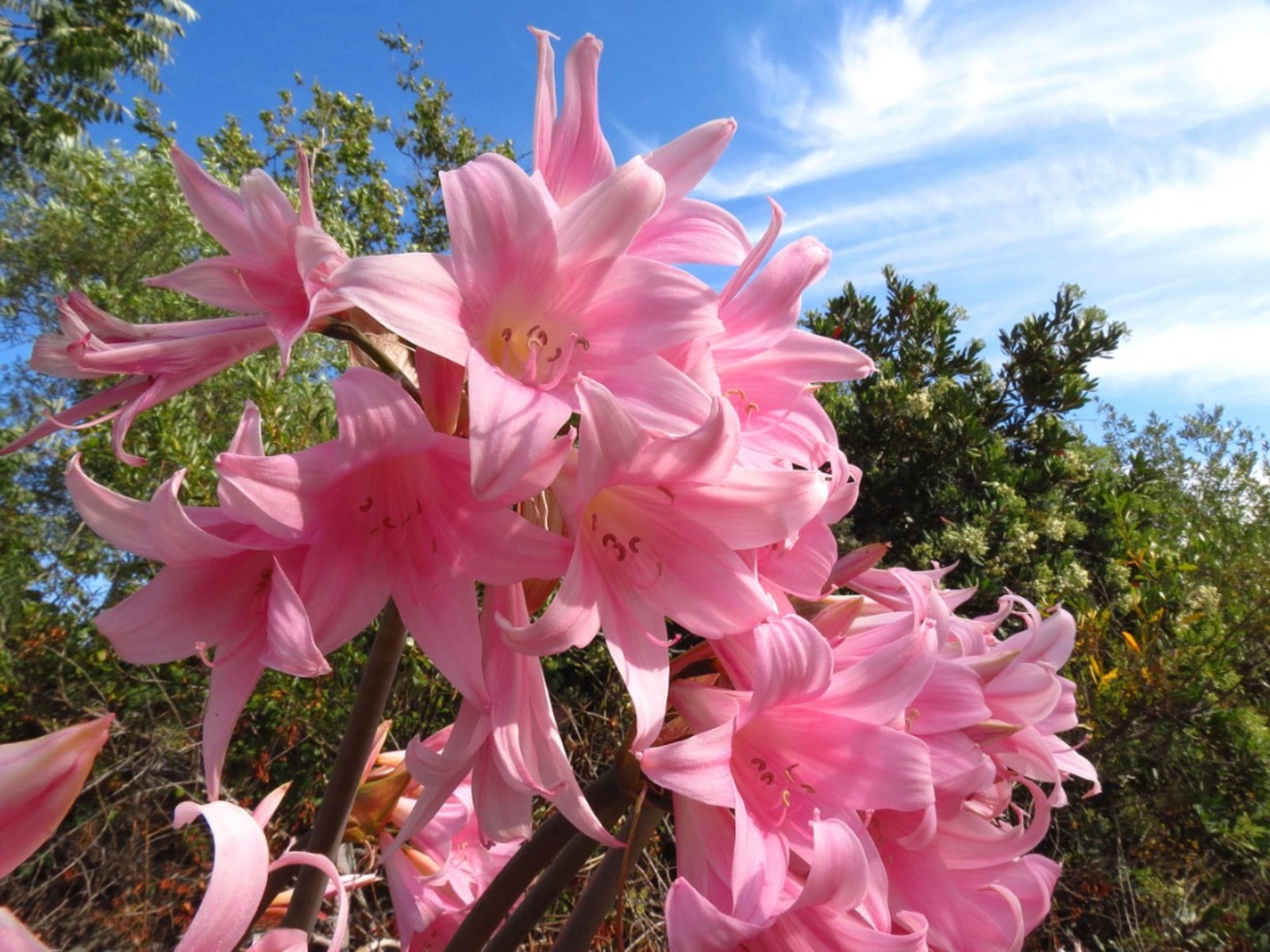Amaryllis Belladonna Flowers: Tips For Growing Amaryllis Lilies


If you’re interested in Amaryllis belladonna flowers, also known as amaryllis lilies, your curiosity is justified. This is definitely a unique, interesting plant. Don’t confuse Amaryllis belladonna flowers with its tamer cousin, also known as amaryllis, which blooms indoors during the holiday season. This type of amaryllis is in the same plant family, different genus. Read on for more amaryllis plant info and amaryllis flower facts.
Amaryllis Plant Info
Amaryllis belladonna is an amazing plant that produces clumps of bold, strappy leaves in fall and winter. The showy foliage dies down by early summer and bare stalks emerge after about six weeks – a surprising development because the leafless stalks appear to grow directly from the soil. These bare stalks are why the plant is often known as “naked lady.” It is also known as “surprise lily” for its proclivity to pop up seemingly out of nowhere. Each stalk is topped with a cluster of up to 12 sweet-smelling, trumpet-shaped blooms in shades of rosy pink. Amaryllis belladonna is native to South Africa, but it has naturalized along the California coastline. It is definitely a plant that thrives on neglect.
Growing Amaryllis Lilies
Amaryllis belladonna performs best in climates with warm, dry summers. A location with a protected southern exposure is ideal. Plant the bulbs in well-drained soil, about 6 to 12 inches (15 to 30.5 cm.) apart. Site the bulbs just below the surface of the soil if you live in a cold winter climate. If you live in a climate where temps remain above 15 F. (-9 C.), plant the bulbs so the tops are level with the surface of the soil, or slightly above. For spectacular impact, plant amaryllis belladonna bulbs in groups of three or more.
Care of Amaryllis Belladonna
Care of Amaryllis belladonna is as easy as it gets. The plant gets all the moisture it needs from winter rains, but if the winter is dry, the bulbs benefit from occasional irrigation. Don’t bother with fertilizer; it isn’t necessary. Divide Amaryllis lilies only when absolutely necessary. The plant dislikes change and may react by refusing to bloom for several years.
Sign up for the Gardening Know How newsletter today and receive a free copy of our e-book "How to Grow Delicious Tomatoes".

A Credentialed Garden Writer, Mary H. Dyer was with Gardening Know How in the very beginning, publishing articles as early as 2007.